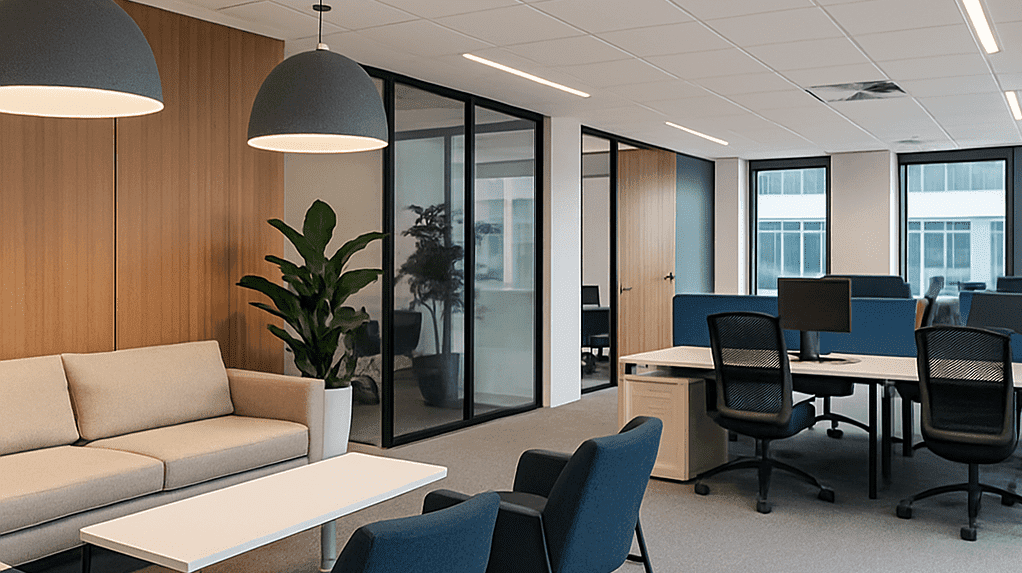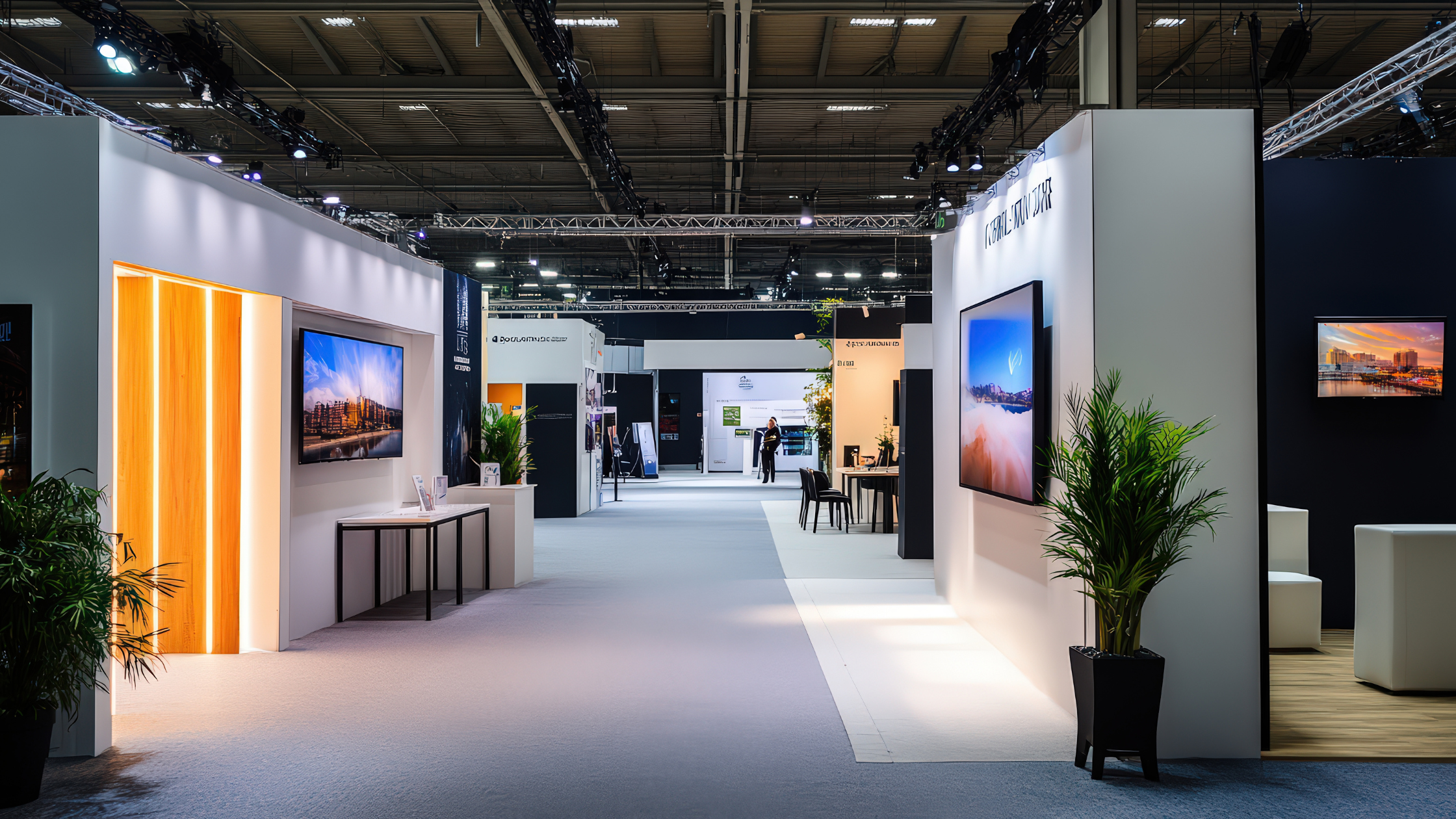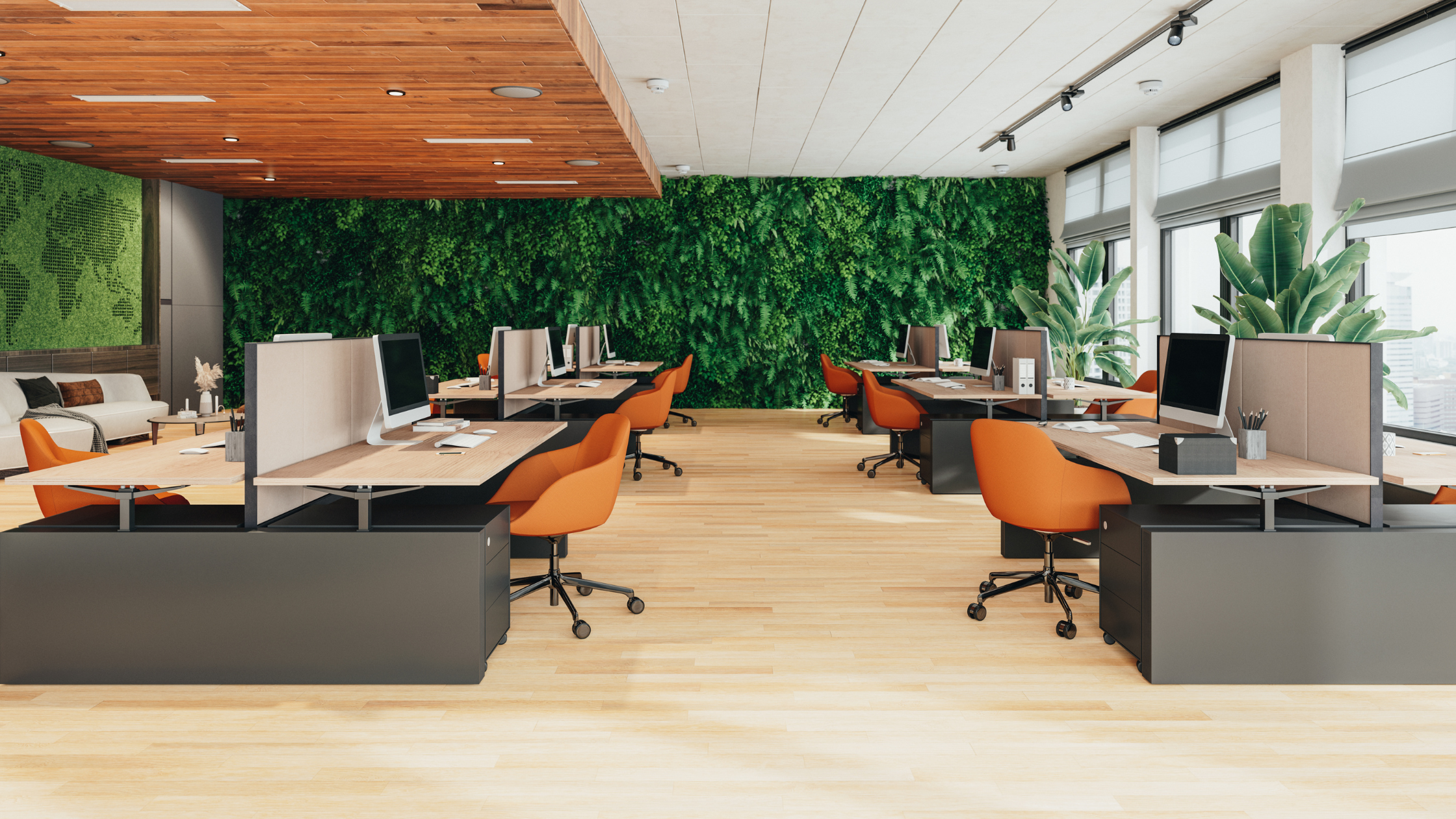TL;DR
What does your office layout say about your company culture, values, and team dynamics? In this post, we explore the unspoken messages your workplace design is sending out. From what your company’s overall layout means to the hidden insights in how you position everything from desks to meeting rooms, we help you decode your office to reveal what it says about your business identity.
Think of your office layout as the body language of your business. You might not even notice it, but visitors, clients, and staff certainly do. The way your workspace is arranged sends a clear message about your brand.
And just like body language, you can tell when something’s off.
Maybe collaboration is encouraged in theory, but teams are boxed into individual desks. Perhaps leadership wants an open-door policy, but their offices are literally walled off in the far corner. Or maybe there’s an expensive breakout area nobody ever uses.
All of these layout decisions are communicating something, whether you meant them to or not.
First Impressions Start With Flow
From the moment someone steps into your space, your office layout begins telling a story. Is it clear where to go? Does it feel welcoming or cold? Efficient or chaotic?
Clients notice how quickly they’re greeted. Job candidates notice where the team sits. New hires feel the difference between a space designed for people versus one that’s been thrown together over time.
This is what we call layout rhythm. It’s how a space flows from one zone to another, corridors that guide, furniture that anchors, and transitions that feel natural, not forced. A well-planned flow supports productivity and reduces friction. A poor one creates confusion and fatigue.
Desk Setups Reveal Hierarchy and Trust
Let’s talk about where people sit.
If your leadership team are working in private offices while the rest of the team is in an open plan, what message does that send? Everyone is in hot desks with no personal space, does that encourage flexibility or make people feel transient and disposable?
It’s easy to default to practicalities when assigning workspaces, but they still speak volumes. Even decisions like back-to-back desks versus clusters can affect team communication and how approachable colleagues feel.
Meeting Rooms Reflect Communication Culture
A meeting room that’s always booked out might be more an inconvenience, it could suggest a culture of too many meetings, poor planning, or a lack of collaboration space.
On the flip side, an over-engineered boardroom with high-end AV that rarely gets used might show a business that’s trying too hard to impress externally but hasn’t considered how the space works day to day.
We often recommend a mix of private, semi-private and open collaboration areas to reflect a balanced approach to teamwork. Not everything needs four walls and a PowerPoint.
Breakout Spaces and the Illusion of Flexibility
You’ve probably seen the trend: beanbags, neon signs, micro-kitchens. But if those spaces are positioned awkwardly, feel performative, or are barely used, they aren’t really adding value.
A great breakout area isn’t just about furniture – it’s about context. Is it easy to access without disrupting others? Is it next to natural light? Does it feel like a part of the office, or a leftover patch?
These zones are where employees decompress, share ideas, and recharge. If they’re treated as an afterthought, that says a lot about how your business views people and productivity.
Hidden Messages in the Gaps
Sometimes, what’s missing in a office layout says just as much as what’s included.
An office with no quiet areas? That tells your team it’s all about speed and availability. No personal storage? That might suggest you value flexibility over individuality. A dark corner nobody ever uses? That’s likely a dead zone wasting valuable square footage.
As designers, we look for those awkward spaces, strange lags in foot traffic, or areas with poor acoustics. They’re like the scuffed edges and overlooked seams in your office, they may be small, but they disrupt the experience.
Your Layout Supports Your Culture
Your office layout shouldn’t just reflect how you work today, it should support how you want to work in the future.
Want more cross-functional collaboration? Make it easier for those teams to interact naturally.
Need better focus? Create nooks or zones that encourage calm and privacy.
Want your team to feel more autonomous? Make sure they aren’t running to the office manager every time they need a whiteboard or charging point.
When layout is intentional, it builds trust, autonomy, and pride in the space.
What We Look for When Planning a Layout
At WOWVI Spaces, we don’t start with mood boards, we start with how your people actually use the space.
We analyse flow, noise levels, pinch points, movement between departments, and how natural light affects energy in the room. Then we build a plan that suits your real working style, not just a Pinterest aesthetic.
We also ask the hard questions. Why is your kitchen twice the size of your project team’s area? Does the finance team never leave their corner? Do you have three meeting rooms but still take Zoom calls in the corridor?
Because behind every awkward layout is an opportunity to improve how your business functions.
It’s Not About Perfect Design, It’s About Honest Design
The most successful office spaces aren’t the flashiest or the most expensive. They’re the ones that feel honest, aligned with how your team, how your business operates, and most importantly – your brand!
A smart layout reflects your values before you even open your mouth. It helps your team feel empowered. It builds clients trust your professionalism. While ensuring your management team are in tune with the rest of your team.
If your office layout doesn’t support those things, it might be time to take another look.
Let’s Redesign the Message Your Office Is Sending
Your workspace is saying something every day. The question is; are you happy with what it’s saying?
If you’re ready to redesign your office with purpose, clarity and a touch of personality, get in touch with the WOWVI Spaces team.
Call us or send an email via our contact page and we’ll help you turn your space into something that truly works for your business.
Part of the WOWVI Group
WOWVI Spaces is proud to be part of the wider WOWVI Group, which means you get access to a full creative team under one roof. Alongside interiors, we also offer commercial videos, TV ads, podcast production from WOWVI Video and printing services from Active Print to help bring your brand to life in every way.


